Mozambique: PDUNM will rebuild two thousand houses and generate around eight thousand jobs
Mozambique: Climate costs unpaid; creating US jobs with Moz graphite – By Joseph Hanlon
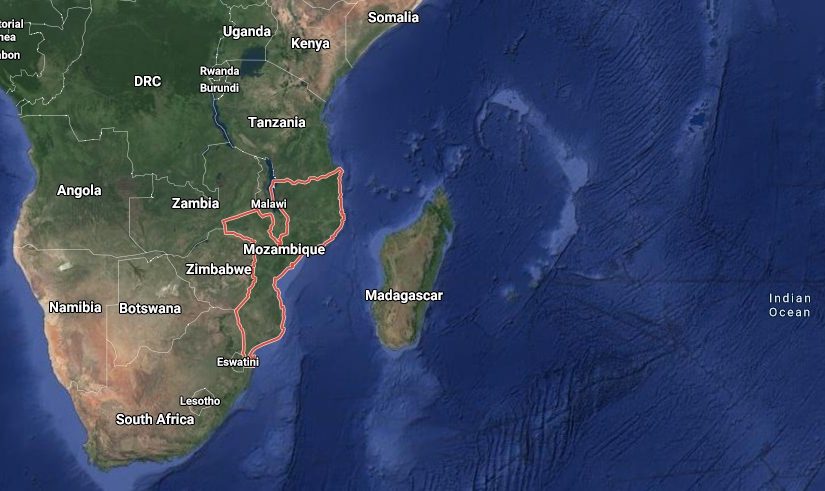
Image: Google Maps
In this issue
Climate
- Huge damage remains from 2019 cyclones
- COP26 will ask Who pays?
Cabo Delgado
- Balama graphite mine to create more US jobs
- Balama strike ends
- War: another incursion into Nampula
$2 bn still lacking to rebuild after 2019 climate emergency cyclones
Higher sea temperatures in the Mozambique Channel caused by the climate emergency made the 2019 cyclones Idai and Kenneth particularly devastating. They killed more than 1000 people in Mozambique, displaced 420,000 others, and reconstruction costs were estimated at $3.2 bn.
More than three years later, support from donors and lenders has reached $1.2 bn, Public Works Minister Carlos Mesquita told a meeting of the Post Cyclone Reconstruction Office (GREPOC) in Beira on 27 October. But $2 bn is still unfunded.
Money continues to drift in, but very slowly. GREPOC executive director Luis Mandlate said in September that government has pulled together $42 mn for the reconstruction of 6,672 houses in Beira, starting in November, three and a half years after the cyclone. (Noticias 19 Sept)
Cyclone Ida made a highly unusual loop and hit Beira and central Mozambique twice, on 4 and 15 March 2019. The World Meteorological Organization on 20 March 2019 called it “one of the worst weather-related disasters in the southern hemisphere”. Cyclone Kenneth hit Cabo Delgado on 25 April with sustained winds of 220 km/h, making it the most intense cyclone in Mozambican recorded history. (CNN 25 Apr 2019)
Cyclones build up their energy from heat taken from the sea in the Mozambique Channel, and recent research at the University of Cape Town shows that the Mozambique channel is subject to increasing “marine heatwaves”. (Climate Dynamics 2022 number 58) The climate emergency is can be measured by rising sea temperature.
Who pays for climate damage done by the north?
The $3.2 bn damage was done by global heating caused over the past century by the industrialised nations. Mozambique made no contribution to this. Yet it is being asked to pay the cost. For two decades, developed countries, led by Bangladesh, have been pushing for the industrialised countries to pay for the “loss and damage” done by global heating. But at the annual climate talks (known as COP, Conference of the Parties to the 1992 Rio accord) developed countries have consistently refused to acknowledge their responsibility for the harm done by global heating.
At COP15 in Copenhagen in 2009, developed countries committed to providing $100 billion per year by 2020 for climate action in developing countries. The goal was repeated at COP16 in Cancun, and at COP21 in Paris. But the $100 bn target has never been met.
The COP26 talks in Egypt 6-18 November will face a bigger confrontation than in the past. Unprecedented flooding in Pakistan, Nigeria and Australia this year have shown the seriousness of the climate emergency. “We have waged war on nature, and nature is striking back, and striking back in a devastating way,” said UN secretary general António Guterres when he visited Pakistan in September. But the war in Ukraine has provided an excuse for the developed countries to return to fossil fuels, notably gas and coal.
The target is that global heating since the start of the industrial era should be only 1.5ºC, as agreed at the Paris COP21. The latest United Nations estimate, issued 26 October, is a projection of global heating of between 2.1ºC and 2.9º, taking into account all national pledges to reduce emissions. https://unfccc.int/sites/default/files/resource/cma2022_04.pdf
Global heating has already reached 1.2ºC and the floods in Pakistan and cyclones in Mozambique show the damage that is done; even 1.5ºC will make matters worse. More than 2ºC as planned by the industrialised countries will have a devastating impact. Even at 1.2º, Mozambique is still expected to find $2 bn from its own budgets for reconstruction of the damage from cyclones more than three years ago.
Mozambique has made little contribution to global heating so far, but it hopes for a major gas development in Cabo Delgado. And it dreams that significant revenues from the gas, which could begin in a decade, will spur development. But based on the costs of the 2019 cyclones, the gas revenue is unlikely to pay for the damage in Mozambique caused by global heating in the next decade. In addition to stronger cyclones, there will be torrential rains causing damage and floods, and droughts and erratic rainfall will hit farming – before there is any significant income from gas.
Meanwhile the world’s biggest oil and gas companies have made profits of over $173 bn in the first nine months of this year, as Russia’s war on Ukraine pushed up energy prices. The two big players in Mozambique gas are TotalEnergies which made $10 bn in the third quarter (July-September) and ExxonMobil which made $20 bn profit in the third quarter alone. Exxon said it would give $45 bn to shareholders through dividends and share buybacks, compared to $23 bn in capital spending. (Guardian 27 Oct, Financial Times 28 Oct)
- Cabo Delgado
Syrah given $220 mn to create 221 US jobs with Mozambique graphite
The US Department of Energy (DoE) announced on 19 October that is has given Syrah Resources $220 mn to expand its factory in Vidalia, Louisiana, USA, which uses graphite from its mine in Balama, Cabo Delgado. The factory expansion will create 221 jobs. The DoE says: “Employing locally, training on-the-job, and progressing through a competency framework will attract and maintain a committed workforce. Syrah’s community strategy includes partnering with over 150 local vendors to prioritize local investments and spending.”
The factory makes active anode material (AAM) for lithium ion batteries. “Syrah’s Vidalia facility will be the only vertically integrated and large-scale natural graphite AAM producer outside China,” says the DoE, reducing the US dependence on China. https://www.energy.gov/sites/default/files/2022-10/DOE BIL Battery FOA-2678 Selectee Fact Sheets – 1_2.pdf
Such a factory could have been built in Cabo Delgado. “Battery graphite does require some processing, mostly to get the right particle size and purity, but in principle can be processed anywhere with the right infrastructure. The key as always is economics and political will,” says Dr Billy Wu, a senior lecturer at Imperial College London in the Dyson School of Design Engineering, and is an expert in batteries, fuel cells and supercapacitors.
In the contemporary world, the capitalist US is allowed to give the private sector $220 mn to create jobs, develop local suppliers, and beat China, while a developing country like Mozambique is not allowed similar state involvement in a key industry. So Mozambique gets a hole in the ground and the US gets skilled jobs and training. That is called “development”.
Syrah strike ends
The six-week-long strike at the Balama graphite mine ended 27 October. Local workers say their grievances remain unaddressed. They had wanted the Mozambican management replaced. They accuse Mozambican managers of nepotistic hiring, bullying and sexual harassment, but an 8 September company document says protests were not accepted because they were not submitted correctly and the company continues to have full confidence in the management.
Strikers claim that non-locals, mainly from Maputo and Tete, are paid considerably than local people, even when they are only apprentices. They also say the payroll department says all local Balama workers have on a 7th grade education, when some have 12th grade. They also claim no worker from Balama has health insurance, but those from the south do. (Zitamar 12, 28 Oct)
War continues, with new attack in Nampula
The Cabo Delgado civil war continues, with insurgents moving south into mining areas, Chiure district, and down to the Lúrio River and again into Nampula province. There have been attacks near the two main roads.
The Indian-owned Gemrock ruby mine on the border between Ancuabe and Montepuez districts was attacked 20 October, with substantial damage of equipment, vehicles and living quarters. Gemrock has suspended operations due to damage to heavy mining equipment, and has suspended plans for expansion.
Four villages were attacked in Mesa, Ancuabe, on 17 October, about 15 km south of the main N14 road connecting Montepuez to Pemba. Unverified reports say 26 dead.
An insurgent band moved south with attacks in Messaja, Katapua and Bilibiza in Chiure district and in Savamone and Nihamae on the Lúrio River. Insurgents are now further inland along the river than they have been. On 27 October they crossed the river and attacked Muaneia in Erati, Nampula, near the main N1 road linking Pemba and Nampula.
Heavy fighting continues in Nangade district.
Macomia district town was attacked on 23 October, the first incursion into the town in a year. Three to five people were killed and cars, motorbikes and houses burned. Insurgents had infiltrated into the town in Mozambican army uniforms. (Zitamar, 27, 28 Oct; Cabo Ligado 18, 25 Oct)
Rwandan forces found three arms caches in heavy forest in the Mbau area in the south of Mocimboa da Praia district, in a zone where insurgents were pushed out of important bases last year. On 15 October a cache was found containing a large number of assault rifles, rocket-propelled grenades, and ammunition. On 19 October another cache was found nearby with over 200 firearms with ammunition. Two days later, the Rwandans announced they had found a third arms cache, containing assault rifles and rocket-propelled grenade launchers, this time in the Limala forest east of Mbau. “Most of the weapons in all of these arms caches appeared to be substantially rusted,” reports Cabo Ligado (25 Oct), suggesting they had been in place since before the Mbau bases were taken last year.
Airline Fly Indico announced that commercial flights between Pemba and Palma will be reinstated from 28 October for the first time after being suspended in March 2021.
Rwandan president Paul Kagame met President Filipe Nyusi in Maputo on Friday 28 Oct.
By Joseph Hanlon



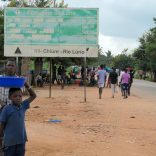


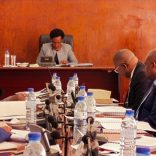
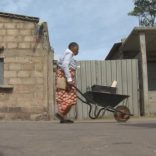
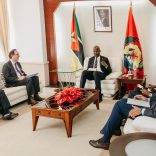

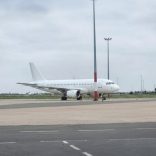
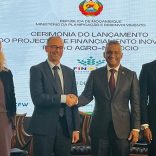

Leave a Reply
Be the First to Comment!
You must be logged in to post a comment.
You must be logged in to post a comment.